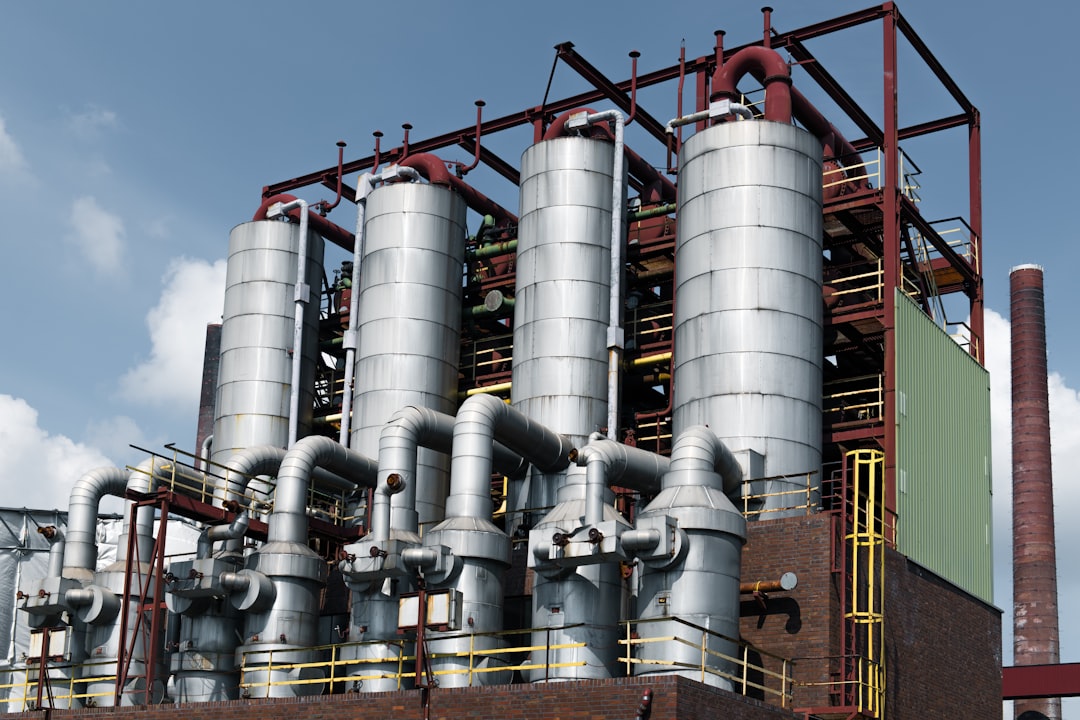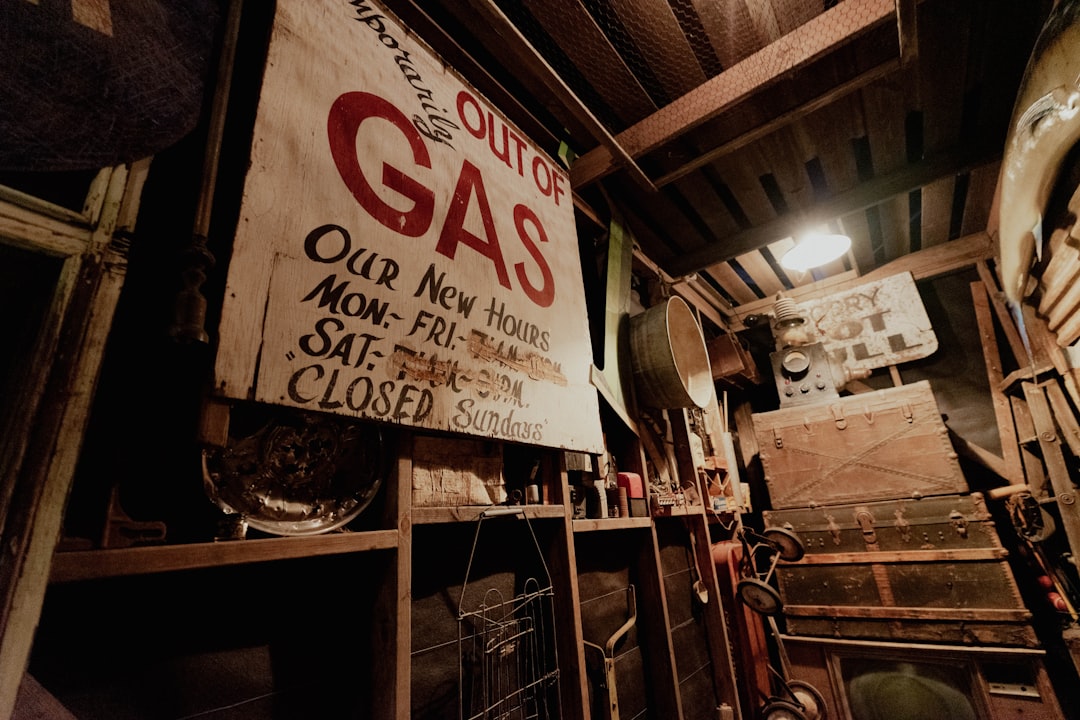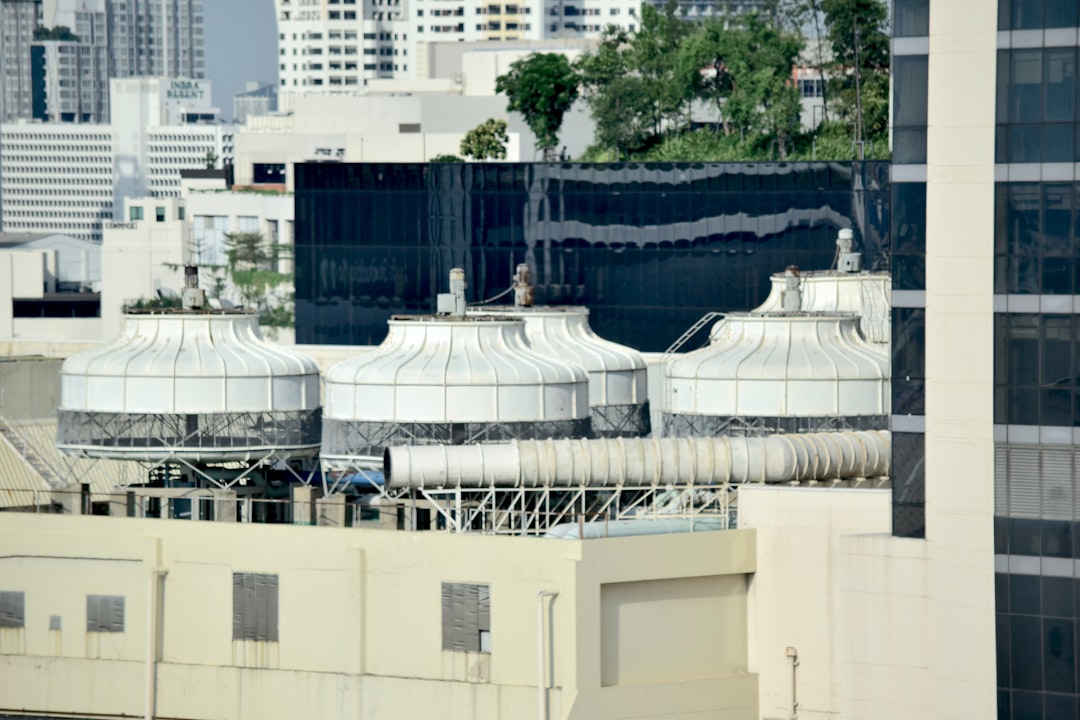

Engage prospects with a scan and streamline customer engagement with FREE QR code marketing tools by Sona – no strings attached!
Create a Free QR CodeFree consultation

No commitment

Engage prospects with a scan and streamline customer engagement with FREE QR code marketing tools by Sona – no strings attached!
Create a Free QR CodeFree consultation

No commitment
Medical gas supply companies play a pivotal role in supporting healthcare facilities, clinics, and laboratories by ensuring a reliable flow of oxygen, nitrous oxide, and other essential gases. In an industry where strict regulatory compliance, documentation transparency, and safety adherence are non-negotiable, streamlining information access is mission-critical. Teams handle a constant inflow of critical documentation: medical gas safety standards, maintenance logs, and quality certifications that must be current, easily accessible, and ready for immediate sharing. For context on adoption trends, see this white paper on QR in healthcare%20(1)%20(1).pdf).
Traditional methods such as printed manuals, paper labels, and physical binders often hamper the ability to keep up-to-date records, leaving staff scrambling to locate the latest certifications during compliance audits or operational assessments. These outdated systems heighten the risk of missing vital updates, introduce operational bottlenecks, and can contribute to missed opportunities for upsell or enhanced service when engagement data is lost in disconnected stacks of paper.
Modern QR code solutions are increasingly addressing these challenges. By digitizing documentation, automating record updates, and making regulatory data instantly available at the point of use, QR codes not only mitigate risk but also help teams respond rapidly to changing requirements. They empower companies to manage compliance with less friction, deliver reliable operational intelligence, and support more efficient supply chain management without requiring complex or costly infrastructure changes. Explore Sona QR’s healthcare strategies in this industry hub.

In medical gas supply companies, the flow of information, from regulatory certifications to day-to-day maintenance records, often faces bottlenecks when documentation is scattered or incomplete. Auditors, technicians, and facility managers need instant, reliable access to up-to-date records, yet many still depend on fragmented, paper-based workflows that result in frustration, lost time, and even missed compliance deadlines.
Replacing analog processes with QR-enabled digital access breaks these bottlenecks. Instead of hunting through binders, staff can scan QR codes affixed to cylinders, manifold control panels, delivery slips, or storage room signage to retrieve the latest certificates, safety data sheets, or maintenance history in seconds. This change reduces audit preparation time, shortens response cycles for service calls, and improves documentation accuracy across distributed sites.
For example, during a regulatory inspection, a quick scan on a storage tank can confirm the most recent gas quality certification and cylinder hydrostatic test date without sifting through filing cabinets. Centralized QR destinations ensure documentation remains consistent across locations, while analytics surface trends like recurring maintenance delays or under-scanned sites that may require additional training.

Several persistent challenges highlight the importance of QR codes for medical gas suppliers. Companies often struggle to track who interacts with their assets or accesses compliance documentation, which can lead to missed engagement signals, late regulatory responses, or overlooked upsell and cross-sell opportunities. In a field where safety, precision, and uptime are critical, these gaps are not just inconvenient, they are costly.
QR codes create a reliable bridge between physical assets and digital records. Every label, invoice, or safety poster becomes a portal to the most current information, reducing the risk of outdated materials circulating within a facility. With dynamic QR codes, teams can update destinations instantly without reprinting labels, which keeps pace with shifting safety protocols and maintenance schedules while keeping costs down. For marketing and operations teams, here’s a quick primer on QR codes in marketing.
In short, QR codes do more than digitize paperwork. They reinforce consistency, enhance safety culture, and reveal patterns of engagement that help companies allocate resources more intelligently. Teams see which departments actively review safety materials, which assets attract the most attention, and where training or support is needed to drive continuous improvement.

The need for granular, up-to-date asset tracking and compliance management has led to a set of QR code formats well suited to medical gas operations. Choosing the right format for each use case ensures that scanners land on the most useful and secure destination with minimal friction.
Dynamic QR codes are the preferred choice for most compliance and operational workflows because they support destination updates and analytics. Static QR codes can be used for evergreen materials like a general company policies page, but they offer no editing flexibility and limited tracking. A hybrid approach often makes sense: use dynamic codes on asset labels and high-sensitivity materials, and reserve static codes for supplementary wall posters or basic signage in low-risk areas.

Growth in the medical gas supply sector is highly correlated with how effectively companies convert physical touchpoints into digital access points and data streams. Every cylinder, truck, receipt, and work order is a chance to capture interest, guide action, and build trust. The key is to be intentional about placement and to standardize how you tag and interpret scan activity.
Each touchpoint serves dual purposes. It streamlines access to what the user needs in the moment, and it generates a data signal that enriches your understanding of the account. When captured consistently, these signals support segmentation, targeted education, and commercial conversations that are well timed and value focused.

Medical gas providers face complex regulatory environments and high service expectations across diverse settings. QR codes can be woven into daily operations to address common risks and elevate customer experience from the loading dock to the clinical floor.
By converting physical assets into interactive documentation portals, companies can catch issues early, automate follow-ups, and ensure that important signals, such as repeated scans on a problem asset or spikes in training engagement, feed into operational decisions. Over time, the same datasets also highlight cross-sell opportunities, like adding remote monitoring or premium service tiers to accounts that demonstrate high compliance needs.
Unidentified or anonymous activity is common in medical gas supply. Technicians, facility managers, and auditors interact with documentation daily, yet their engagement often goes untracked. QR codes help segment these behaviors at the source so you can personalize follow-up and strengthen relationships with each stakeholder.
Start by assigning unique codes to distinct documentation types and surfaces. A code on the certificate of analysis leads to one audience. A different code on maintenance logs leads to another. Over time, each audience reflects the real-world roles and interests of your scanners, allowing for tailored communication and service pathways.
With segmentation in place, you move beyond generic updates. Each scan informs a more precise interaction: personalized SOP refreshers for frequent scanners in critical care units, purchase workflows for procurement teams reviewing gas usage data, or proactive outreach for sites with declining engagement that may be at risk of compliance gaps.
QR codes unify your offline presence and digital ecosystem. In an industry reliant on field teams, physical labels, and on-site training, that unification is essential for clarity and consistency. When every channel points to the same current information and every scan is measured, you reduce confusion while increasing your ability to act on real demand signals.
Use QR codes to augment both operational and commercial communications. On the operational side, they provide real-time access to documentation and training, and they capture compliance engagement that can be reported to leadership or regulators. On the commercial side, they give marketing and sales teams visibility into who is active, where interests lie, and when to follow up.
QR codes act as the offline onramp to your digital engine. With a centralized platform such as Sona QR, you can manage codes across campaigns, monitor performance in real time, and synchronize scan data with your CRM and ad platforms to deliver cohesive, measurable experiences. Start creating QR codes for free.
QR implementations succeed when they are grounded in clear goals, thoughtful design, and disciplined measurement. The following checklist outlines a practical path from planning to optimization tailored to medical gas operations.
Establish a common language for success metrics across compliance, operations, and sales. Agree on what success looks like, from audit readiness to customer satisfaction and revenue signals, then iterate using real-world scan data to refine over time.
Start with a discovery audit of your documentation and field processes. Identify where paperwork slows teams down, where records go missing, and where audits routinely create stress. Typical friction points include certificate retrieval, maintenance sign-offs, cylinder tracking, and training validation. Rank these by impact and feasibility.
Select dynamic QR codes for critical documentation and assets. Dynamic codes let you update destinations, capture analytics, and maintain continuity without relabeling cylinders or equipment. Static codes have a place for evergreen materials, but they limit optimization options.
In industrial and clinical environments, scannability depends on thoughtful design. Choose high-contrast codes, add quiet zones, and test in the real lighting conditions of storage rooms and loading bays. Use labels that resist abrasion, moisture, and chemical exposure. For inspiration on durable applications, see stickers and labels.
Deploy codes where they align with daily workflows. Labels on cylinder collars, tank placards, and manifold panels put documentation at the point of need. Codes on delivery paperwork and technician badges support handoffs and verification. Stagger rollout by site or region, gather feedback, and refine before scaling.
Build a measurement cadence. Review scan volume by code, location, and role, then correlate with downstream outcomes like closed service tickets, training completions, and on-time audits. Use this feedback loop to prioritize enhancements and to forecast where additional support is required.
Without full visibility into who accesses documentation and when, medical gas supply companies risk leaving high-value opportunities on the table and missing root causes of failed audits, low customer engagement, or lapsed service contracts. Traditional approaches often stop at the scan count, which is insufficient for rigorous compliance management or performance marketing.
Robust analytics capture the full journey: the asset scanned, the context of the interaction, the content consumed, and the follow-up actions taken. When this data flows into CRM and ERP systems, leaders can understand how documentation access correlates with service outcomes, account health, and growth potential. This moves teams from reactive fire drills to proactive, data-driven improvement. For measurement frameworks across channels, explore offline attribution.
With platforms such as Sona QR and Sona, you can track scans in real time, sync activity to HubSpot or Salesforce, and connect anonymous engagement to known buyers through identity resolution. Sona is an AI-powered marketing platform that turns first-party data into revenue through automated attribution, data activation, and workflow orchestration, helping teams capture demand, optimize spend, and scale pipeline with precision.
QR deployment is most effective when it is intentional, measured, and paired with process enablement. The following tips focus on the realities of medical gas operations and the media most common in the field.
Two creative deployment examples illustrate these principles in action. First, invoices and statements can include a QR code that opens a facility-specific compliance dashboard with expiring certificates and recommended trainings. Second, technician ID badges can host a QR code that verifies credentials and opens the account’s maintenance history, which streamlines access control at secure sites and builds confidence with clinical staff.
Medical gas supply companies are uniquely poised to benefit from comprehensive QR code adoption, which transforms static documentation processes into dynamic, data-rich workflows. By filling long-standing gaps in compliance visibility, documentation access, and customer engagement with seamless digital experiences and actionable analytics, these companies can accelerate regulatory readiness, reduce operational risk, and build lasting trust. As compliance landscapes evolve and customer expectations rise, QR-powered documentation stands out as an essential building block for continuous operational excellence and future growth.
QR codes have transformed medical gas supply companies from relying on cumbersome paperwork to delivering instant, accessible documentation that enhances safety and compliance. Whether it’s streamlining access to critical manuals, verifying certifications, or simplifying maintenance records, QR codes replace slow manual processes with fast, mobile-friendly solutions that ensure accuracy and traceability at every touchpoint. Imagine instantly providing field technicians and clients with up-to-date documentation, reducing errors and downtime, while improving trust and operational efficiency.
With Sona QR, you can create dynamic, trackable QR codes in seconds, update linked documents without reprinting labels, and monitor every scan to gain insights on usage and compliance. No more outdated paperwork or uncertainty—just seamless, real-time access to vital information that supports safer and more reliable medical gas management.
Start for free with Sona QR today and turn every scan into a guarantee of safety, compliance, and customer confidence.
The article does not specify names of top global medical gas supply companies.
Ensure the company maintains current medical gas safety standards, quality certifications, and transparent documentation that is easily accessible and compliant with regulatory requirements.
They provide reliable supply of gases like oxygen and nitrous oxide, maintain safety certifications, manage maintenance logs, offer training materials, and support regulatory compliance.
Verify through access to up-to-date certificates of analysis, ISO compliance documents, maintenance records, and audit-ready digital documentation often accessible via QR codes.
Consider their compliance with safety standards, documentation transparency, ease of access to certifications, use of digital tools like QR codes for record management, and ability to support audits and training efficiently.
QR codes digitize and centralize documentation, enabling instant access to up-to-date certifications, maintenance logs, and safety data, reducing audit preparation time and improving compliance tracking.
Common types include web links to document portals, forms for service requests, vCards for contact information, SMS or email triggers for urgent communication, and app download links.
Dynamic QR codes allow instant updating of linked content without reprinting labels, support scan tracking and analytics, and enhance compliance management compared to static codes.
By attaching QR codes to assets and signage, companies provide immediate access to safety certificates, maintenance logs, and training, which streamlines audits and supports timely compliance.
Design codes with high contrast and durability for industrial environments, include clear call-to-actions, brand codes for trust, and place them at points of use like cylinders, manifolds, delivery slips, and technician badges.
They log scan events including time, location, device, and content accessed, then integrate data with CRM or ERP systems to correlate documentation access with service outcomes and customer engagement.
Growth arises from converting physical touchpoints into digital access points that capture engagement data, identify high-value accounts, enable targeted training, and reveal upsell opportunities.
By assigning unique QR codes to different documentation types and locations, companies can identify roles and interests of scanners to tailor training, alerts, and marketing outreach.
Steps include assessing documentation pain points, choosing appropriate QR code types, designing durable and clear codes, strategically placing codes, piloting deployments, training staff, and monitoring analytics for continuous improvement.
They reduce time spent searching for documents, improve accuracy of maintenance logging, enable real-time training access, and automate compliance reporting, leading to smoother operations.
Use Sona QR's trackable codes to improve customer acquisition and engagement today.
Create Your FREE Trackable QR Code in SecondsJoin results-focused teams combining Sona Platform automation with advanced Google Ads strategies to scale lead generation

Connect your existing CRM

Free Account Enrichment

No setup fees
No commitment required

Free consultation

Get a custom Google Ads roadmap for your business






Launch campaigns that generate qualified leads in 30 days or less.
